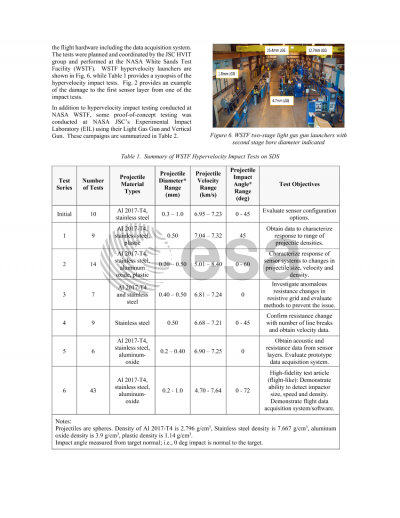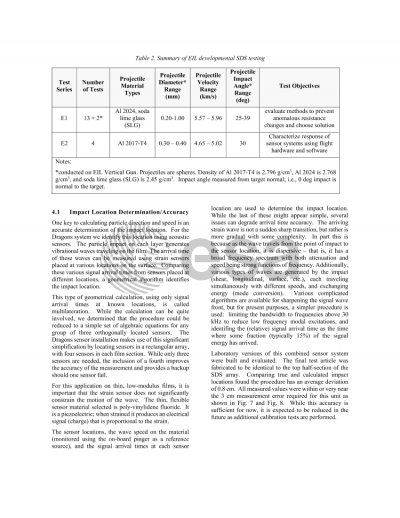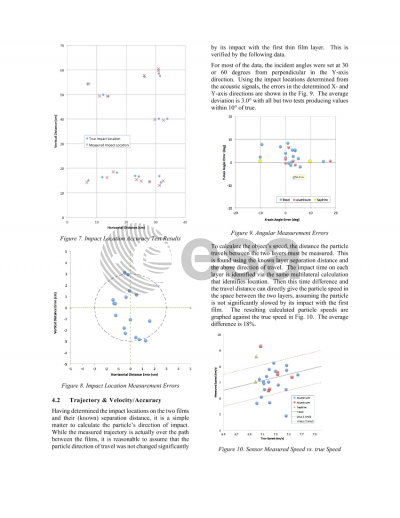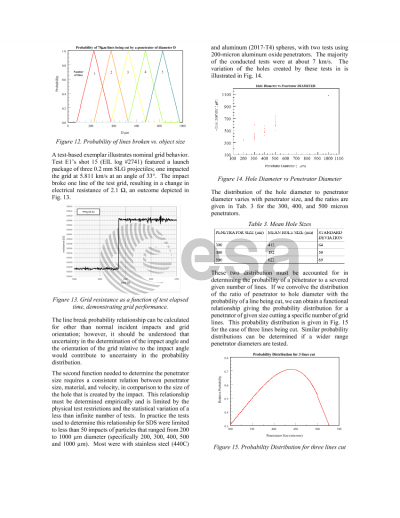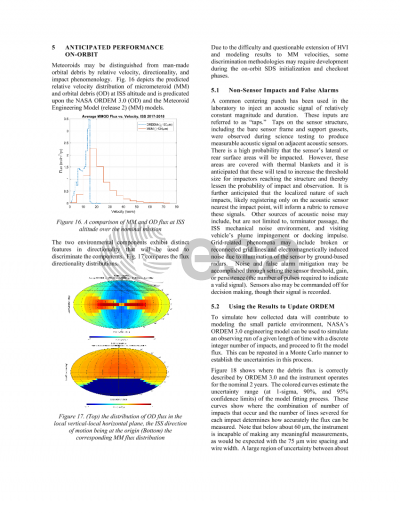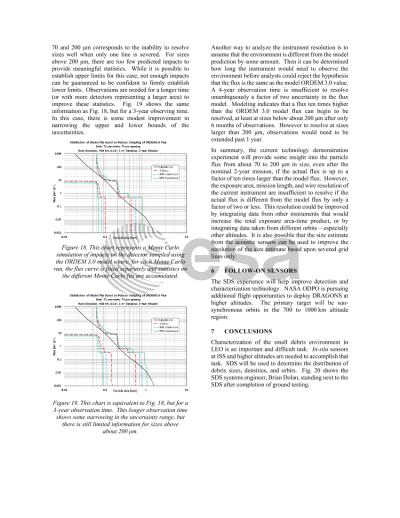Document details
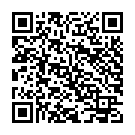
Abstract
The Space Debris Sensor (SDS) is a NASA experiment scheduled to fly aboard the International Space Station (ISS) starting in 2018. The SDS is the first flight demonstration of the Debris Resistive/Acoustic Grid Orbital NASA-Navy Sensor (DRAGONS) developed and matured at NASA Johnson Space Center’s Orbital Debris Program Office. The DRAGONS concept combines several technologies to characterize the size, speed, direction, and density of small impacting objects. With a minimum two-year operational lifetime, SDS is anticipated to collect statistically significant information on orbital debris ranging from 50 µm to 500 µm in size.
This paper describes the features of SDS and how data from the ISS mission may be used to update debris environment models. Results of hypervelocity impact testing during the development of SDS and the potential for improvement on future sensors at higher altitudes will be reviewed.
Preview



